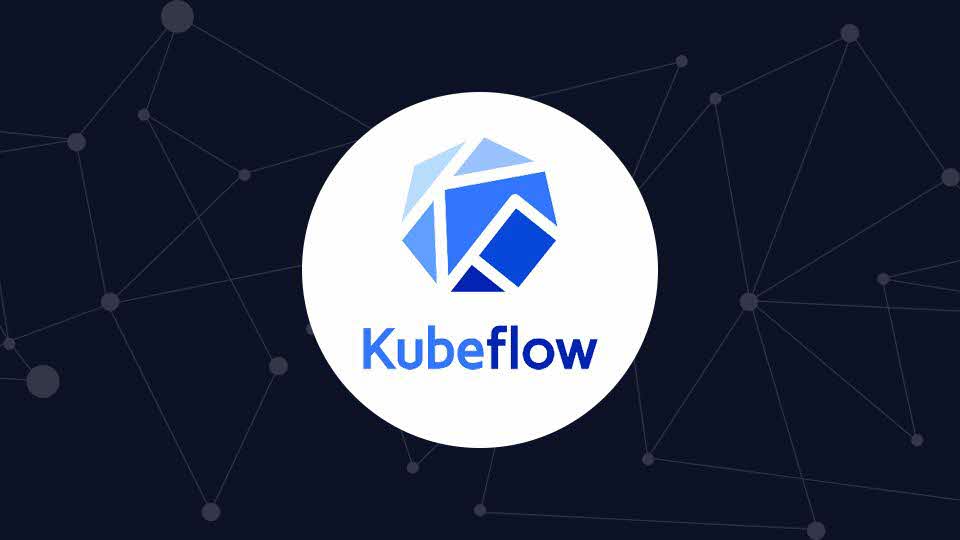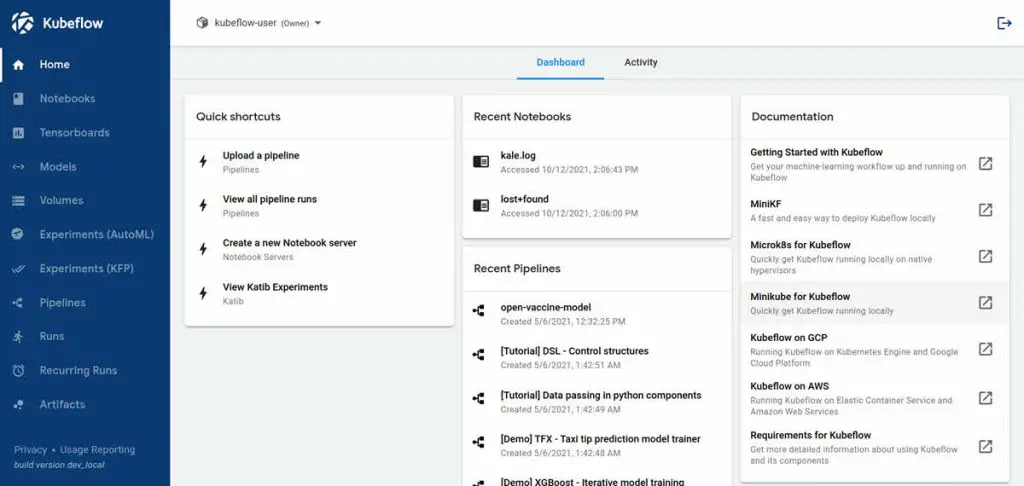Deep Dive into Kubeflow: The Architect of the AI Revolution
Data is king in the age of digital technology. However, the true value of information lies in realising its untapped potential, which is where machine learning (ML) comes into play. It’s not just about gathering terabytes of data. It can be difficult to navigate the complex world of machine learning development and deployment, though, as it frequently calls for sophisticated infrastructure and specialised knowledge. Fortunately, Kubeflow shows up as a ray of sunshine, streamlining and simplifying the whole machine learning lifecycle.
What is Kubeflow?
Envision a platform that enables you to create, implement, and oversee machine learning workflows with grace and simplicity. That summarizes Kubeflow. Situated atop the sturdy bedrock of Kubernetes, it synchronizes intricate machine learning workflows, promotes cooperation between data scientists and engineers, and guarantees the smooth implementation of model’s at large scale.

Unleashing the Power: A Glimpse into Kubeflow’s Potential
The beauty of Kubeflow lies in its versatility. It transcends industry boundaries, empowering organizations across diverse sectors to tackle groundbreaking challenges:
- Retail: Imagine hyper-personalized recommendations that predict your next purchase before you even know it, or dynamic pricing based on real-time demand fluctuations. Kubeflow analyzes vast customer data to optimize the shopper journey, boosting engagement and sales.
- Healthcare: Kubeflow empowers doctors to see the unseen. Think analyzing medical images to detect tumors at the earliest stages, predicting patient outcomes with remarkable accuracy, or even accelerating drug discovery with automated simulations. It unlocks the potential of healthcare data, saving lives and improving patient care.
- Finance: From predicting market trends to mitigating financial risks, that becomes the silent guardian of the financial world. Imagine tailoring investment strategies to individual clients based on real-time data, optimizing loan approvals with AI-powered risk assessments, or even detecting fraudulent transactions before they drain accounts. It brings trust and transparency to the financial ecosystem.
- Manufacturing: Imagine factories that predict equipment failures before they happen, optimize production lines for maximum efficiency, or ensure flawless product quality through AI-powered inspections. It analyzes sensor data and production metrics, transforming manufacturing into a dance of precise operation and predictive maintenance.
- Agriculture: It doesn’t just tell you when to water your plants. Imagine predicting crop yields with uncanny accuracy, optimizing resource allocation based on weather patterns, or even identifying pests and diseases before they decimate harvests. That helps farmers become stewards of the land, maximizing yield while minimizing environmental impact.
These are just a glimpse into the diverse landscape of Kubeflow’s applications. Each industry boasts a unique story of how this platform transforms data into actionable insights, reshaping entire sectors and driving the future of AI integration.
From Sandbox to Production: Bringing Kubeflow to Life
Now, let’s shift gears from the big picture to the practical aspect of implementation. Installing Kubeflow isn’t a one-size-fits-all endeavour, so let’s explore different options:
- Cloud-Based Solutions: Embrace the ease of managed its services offered by major cloud providers like Google Kubernetes Engine (GKE) or Amazon EKS. These platforms handle the heavy lifting of infrastructure management, letting you focus on building and deploying your ML pipelines. We’ll walk you through the specific steps involved in each platform, highlighting the pros and cons of each approach.
- On-Premises Deployment: Do you prefer complete control over your infrastructure? We’ll guide you through deploying it on your existing Kubernetes cluster, providing detailed instructions and configuration tips. We’ll tackle common challenges like resource allocation and security considerations, empowering you to take full ownership of your ML environment.
- MiniKF: For those starting small or exploring in a sandbox environment, MiniKF offers a lightweight Kubeflow experience on a single machine. We’ll explain how to get MiniKF up and running quickly, making it the perfect playground for experimentation and learning.

Core Components
Now, let’s explore the essential components that form the beating heart of Kubeflow:
- Pipelines: The architect’s toolkit, enabling users to visually design and orchestrate multi-step ML workflows. Imagine crafting pipelines like Legos, connecting containerized steps like training, data pre-processing, and evaluation – all within a user-friendly interface. Pipelines follow the logic of Directed Acyclic Graphs (DAGs), ensuring clear dependencies and smooth execution.
- Notebook Servers: These are the collaborative hubs where data exploration, model development, and experimentation come alive. Jupyter Notebooks act as playgrounds for data scientists, fostering knowledge sharing and teamwork through shared environments and interactive sessions.
- Metadata Store: Think of it as the brain of Kubeflow, meticulously cataloging and managing experiment metadata, model artifacts, and pipeline configurations. This centralized repository ensures reproducibility, facilitates collaboration, and allows for comprehensive tracking of your ML journey.
- TensorFlow Serving: The bridge between models and the real world. This component seamlessly deploys trained TensorFlow models for real-time prediction and inference. Imagine your models handling high-volume requests with lightning-fast response times, enabling applications like image recognition or fraud detection.
- Katib: The tireless optimizer, constantly seeking the best configurations for your models. Through hyperparameter tuning, Katib automates the search for optimal values, saving you time and resources while boosting model performance.
- Fairing: The deployment maestro, streamlining the process of building, training, and deploying models across diverse environments. From local machines to cloud platforms, Fairing takes care of the heavy lifting, allowing you to focus on the bigger picture.
Beyond the Core: Expanding the Ecosystem
It doesn’t exist in isolation. It thrives by seamlessly integrating with a vibrant ecosystem of tools and extensions:
- Central Dashboard: Your command center, offering a unified view of its resources, pipelines, experiments, and models. Monitoring, managing, and understanding your ML projects becomes effortless.
- Experiment Tracking: Tools like MLflow or Kubeflow’s own Metadata Store keep track of every step of your experiments, logging results, parameters, and artifacts for future analysis and reproducibility.
- Model Versioning: Imagine revisiting past versions of your models, tweaking configurations, and making informed comparisons. Model versioning facilitates continuous improvement and allows you to learn from your experiments.
Integration and Flexibility: Unifying the ML Landscape
It doesn’t discriminate. It embraces diversity by seamlessly integrating with other key players in the ML world:
- Kubernetes Ecosystem: Logging, monitoring, authentication, and authorization tools from the broader Kubernetes ecosystem seamlessly work with Kubeflow, creating a cohesive experience.
- ML Frameworks: TensorFlow, PyTorch, MXNet, Scikit-learn – the choice is yours! Kubeflow supports a range of ML frameworks, offering flexibility for model development and ensuring your favorite tools are at your fingertips.
- Cloud Providers: Google Kubernetes Engine (GKE), Amazon EKS, Azure Kubernetes Service (AKS) – Kubeflow plays well with all of them, making cloud-based deployments smooth and hassle-free.
Further Reading
OKD: Unleashing the Power of Kubernetes for Open-Source Innovation
KubeVirt: The Next-Gen Virtualization Solution for Kubernetes – Run Containers and VMs Side-by-Side
Kubewise, Multi-Platform Desktop Client for Kubernetes
External Links
Kubeflow Official Website: Kubeflow









